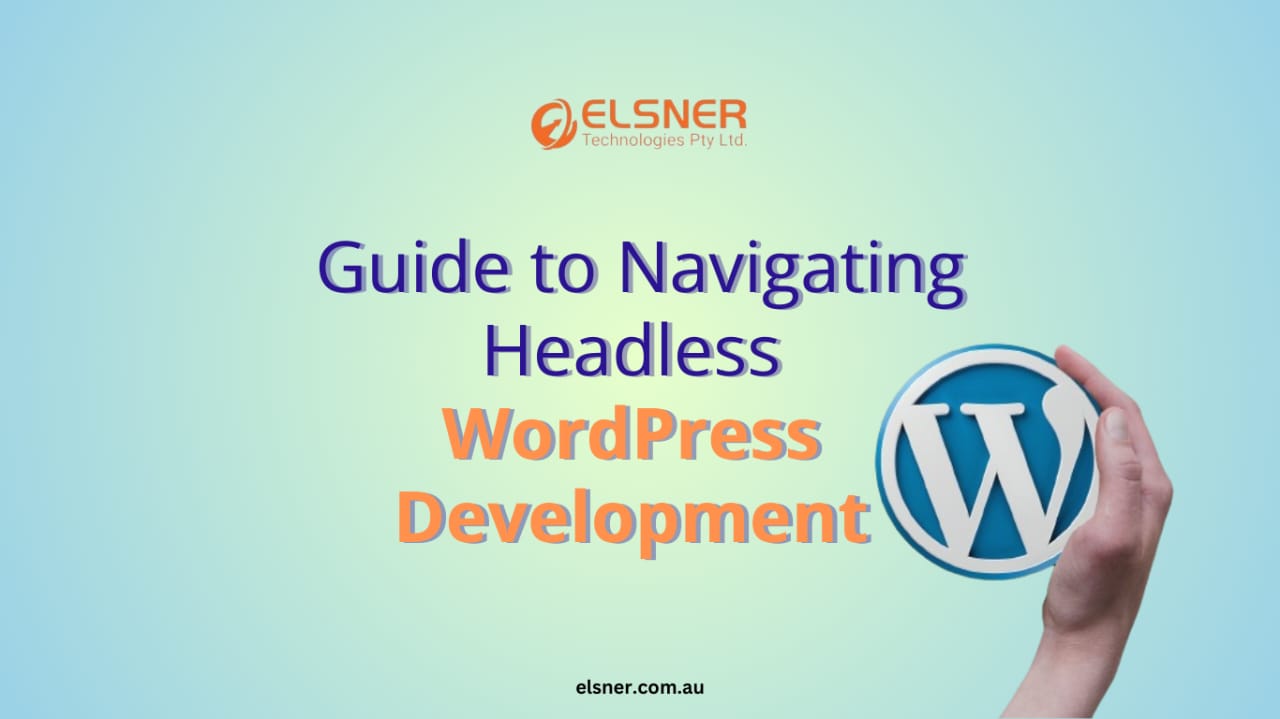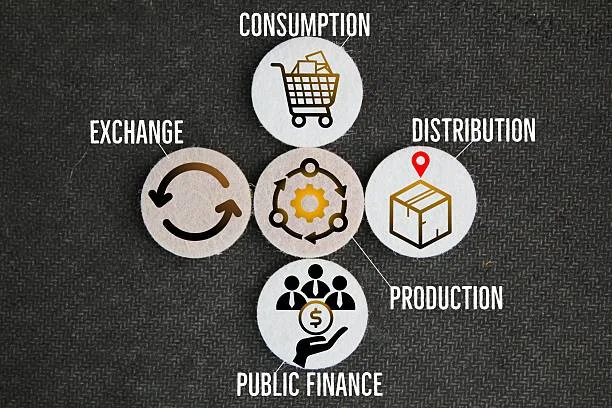TECHNOLOGY
A Guide to Navigating Headless WordPress Development

Headless WordPress development has emerged as a powerful way to build modern, flexible, and scalable web applications in recent years. By decoupling the front-end presentation layer from the back-end content management system or CMS, developers have unprecedented freedom to craft immersive digital experiences that integrate smoothly with different platforms and technologies.
If you are looking forward to going for headless WordPress development, then first of all, it is important to learn about its basics, benefits, and a lot more. So, let’s dive in:
What is Known as Headless WordPress Development?
Conventionally, WordPress is recognized for its all-inclusive solution, where the CMS plays a key role in effectively handling both the management and presentation of content. But, in the case of a headless architecture, WordPress acts as an API provider and content repository while the front end is built by employing a completely distinct technology stack or framework.
Thus, this separation helps developers to use the solid features of WordPress in order to facilitate better management of content. Also, in this case, front-end technologies such as Vue.js, React, or Angular are used to craft dynamic user interfaces. To learn further, all that you need to do is reach out to a professional WordPress web design agency.
What are the Key Benefits of Headless WordPress Development?
Now that you have understood a bit about headless WordPress development, it is time to explore its key advantages. So, let’s discover:
- Flexibility: Headless WordPress is known for offering unmatched flexibility to developers and provides them with the liberty to select front-end technologies. It is different from conventional WordPress development, where the structure and presentation of content depend on themes. In this case, headless architecture lets WordPress developers leverage modern frameworks. Some of these include Angular, Vue.js, or React, as mentioned in the above section.
So, with this flexibility, it is possible to come up with highly customized and optimized user experiences that perfectly cater to user preferences and project requirements. Not only that, but the developers from a leading web design company can make use of the most updated tools and libraries for the implementation of unique features and functionalities. All of these help in making sure that the app remains updated and competitive.
- Speed: Another major advantage associated with headless WordPress development is its capability to considerably boost page load times. Not only that, but it also helps in improving the overall website performance. Headless architectures are well known for eradicating the requirement for rendering pages on the server side. It ultimately helps reduce the time needed to deliver content to users’ devices.
Thus, it results in more responsive and faster experiences. Also, headless WordPress applications rely on different techniques for pre-rendering content and optimizing delivery over CDNs or content delivery networks. Some of these techniques include server-side rendering, static site generation, etc. As a result, users can reap exceptional advantages from near-instantaneous page loads, a smoother browsing experience and improved interactivity. Thus, it ultimately results in higher satisfaction levels and better engagement.
- Scalability: Headless architectures are well-known for their exceptional scalability. They are able to effectively manage large traffic volumes and adapt to growing users without sacrificing functionality or performance. In this case, decoupling of the front-end presentation layer occurs from the back-end CMS. With this, headless WordPress applications can effectively distribute the processing power, allowing this for seamless scalability across multiple servers or cloud-based environments.
Again, this scalability helps in making sure that the application can adapt to changing requirements and accommodate future developments, without encountering downtime or performance degradation. As a result, it helps in providing a reliable and consistent user experience in any environment. To leverage this in the best possible manner, it is suggested to choose a reputed web design company.
- Future-Proofing: Taking a headless approach makes your website or application future proof, ensuring it adapts to emerging technologies and trends. Unlike traditional CMS platforms, which can become outdated or limited in functionality over time, headless WordPress provides a foundation for innovation and improvement.
By separating content management from presentation, headless architectures can enable businesses to employ new frameworks, technologies and paradigms as they emerge. The best part is that, in this case, it does not get constrained by the limitations of a monolithic CMS. So, this future-proofing helps in making sure that the application remains relevant, competitive, and flexible in the face of technological advances and shifting user expectations. This protects your investment and allows you to be successful in the long run. Make sure to hire a WordPress developer to get the maximum benefits out of this.
- Cross-Platform Compatibility: Headless WordPress applications are fundamentally platform agnostic and are able to seamlessly integrate with multiple platforms and devices. Whether accessed through a web browser, mobile app, IoT device, or digital signage, headless WordPress content is known for maintaining consistency across different touchpoints.
So, it enables businesses to reach audiences wherever they are, delivering a personalized and engaging experience tailored to the device of every user. Additionally, headless WordPress applications use APIs and webhooks to sync content across multiple channels and touchpoints. Thus, it helps in ensuring a consistent and unified brand experience,, especially across the overall digital ecosystem.
What are the biggest challenges of headless WordPress development?
Headless WordPress is involved in providing a range of benefits, as seen in the above section. However, it is known for presenting certain challenges, which the developers should essentially take into consideration. Let’s find these out in the following section:
- Learning Curve: Developers who are used to conventional WordPress web design and development may face a learning curve at the time of transitioning to headless architecture. It is especially important because it necessitates familiarity with APIs and front-end frameworks.
- SEO Considerations: As content rendering typically takes place on the client-side, the WordPress developer hired from a recognized WordPress web design company should focus on making sure that the SEO best practices, like pre-rendering or server-side rendering techniques, are implemented properly. It will help in maintaining search engine visibility.
- Content Preview: Previewing changes made in content in real-time can be difficult without a firmly integrated front end. So, it typically necessitates extra development effort to implement in a custom preview solution.
- Complexity: It is important to note that headless components can introduce complexity, especially while managing data synchronization, state management, and routing between the WordPress back-end and front-end.
What are the Best Practices for Headless WordPress Development?
If you are looking forward to effectively navigating the world of headless WordPress development, there are many of the best practices that become important for you to follow. Some of these include the following:
- Selecting the Appropriate Front-End Framework: One of the most important best practices that you should focus on following is to choose a front-end technology stack or framework matching your project needs, team expertise, and long-term objectives.
- Adopting SEO-Friendly Practices: You should focus on putting utmost emphasis on pre-rendering or server-side rendering solutions for ensuring search engine crawlers can effortlessly index your content and maintain SEO performance.
- Optimizing Content Delivery: It is crucial to implement lazy loading, caching strategies and image optimization strategies. All of these help in ensuring efficient and fast content delivery to the users.
- Staying Updated on Front-end Technologies and WordPress: You should keep yourself abreast of the most recent developments that has occurred in WordPress core updates, front-end technologies and plugins. By ensuring this, you can leverage new features along with optimizations for your headless projects.
- Investing in Testing and Maintenance: Thoroughly test your headless WordPress application on different devices and browsers to ensure compatibility and performance. In this regard, you can make use of monitoring tools to monitor key metrics and proactively identify potential issues.
If you are having a tough time implementing any of these best practices, you can hire WordPress developer.
Concluding Thoughts
All in all, Headless WordPress development provides a flexible, scalable, and future-proof way to build modern web apps. By decoupling the front-end presentation layer from the back-end CMS, developers are able to successfully craft immersive digital experiences that integrate seamlessly with different platforms and technologies.
Although headless architectures pose challenges, like learning curves, SEO considerations, etc., by sticking to the best practices and staying updated, developers can succeed with this new approach. So, it is high time to leverage the power of headless WordPress development and open up new possibilities for your next project. For getting top-notch outcomes, it is suggested to reach out to a professional WordPress web design company.
TECHNOLOGY
Your Access, Upgraded: The Professional Benefits of RM1.to

In today’s fast-paced digital economy, professionals are constantly seeking tools that streamline workflow, increase efficiency, and maintain security. One platform that has been gaining attention in the online workforce community is rm1.to. Designed to provide secure and efficient access to specialized digital services, rm1.to is redefining how professionals work, collaborate, and manage tasks in a digital-first environment.
Simplified Access for Professional Tasks
One of the standout benefits of RM1.to is its focus on streamlined access. For many professionals, managing multiple digital tools, accounts, and permissions can be a time-consuming and error-prone process. RM1.to addresses this by offering a centralized platform where users can quickly access the services they need.
Whether it’s specialized data work, content creation, or technical support, RM1.to ensures that professionals can connect with verified service providers efficiently. By eliminating the usual friction associated with task assignment, approval, and payment, users can focus on productivity rather than administrative hurdles.
Enhanced Security for Peace of Mind
Security is a top priority in any professional setting, and RM1.to integrates it as a core feature. Traditional methods of managing access and digital collaboration can leave sensitive information exposed to risk. RM1.to mitigates this with built-in protections for both clients and service providers.
For professionals, this means confidence in every interaction. Payments are securely handled, services are verified, and access is monitored to prevent unauthorized use. The platform’s focus on transparency and accountability ensures that tasks are delivered reliably, reducing disputes and creating a trustworthy environment for all users.
Efficiency That Supports Growth
Another major benefit of RM1.to is its ability to support fast, efficient workflows. In the modern digital workforce, speed is often as critical as accuracy. RM1.to allows professionals to delegate micro-tasks quickly without worrying about complex onboarding or verification processes.
By combining rapid access with secure, verified transactions, the platform allows individuals and teams to scale their operations efficiently. Professionals can take on more projects, meet deadlines faster, and maintain high-quality standards—all without compromising security or accountability.
Flexibility for Diverse Professional Needs
The versatility of RM1.to is another reason it appeals to professionals. The platform is not limited to a single industry or type of task. From creative projects and technical support to data analysis and research, RM1.to can accommodate a wide range of professional requirements.
This flexibility enables professionals to adapt to evolving workloads, delegate tasks efficiently, and access specialized expertise on-demand. The platform acts as a bridge, connecting users with services that would otherwise require time-intensive searches or additional hires.
Building Trust Through Transparency
Trust is essential in any professional relationship, particularly in digital environments where users may never meet in person. RM1.to fosters trust through clear service descriptions, structured workflows, and feedback mechanisms. Both clients and service providers can review performance and maintain accountability, which strengthens collaboration and minimizes misunderstandings.
For professionals, this transparency not only ensures reliability but also allows them to make informed decisions when choosing services or partners. The platform’s structure encourages ethical practices and responsible usage, creating a professional ecosystem built on trust.
Conclusion
RM1.to offers a combination of security, efficiency, and flexibility that makes it a valuable tool for today’s digital professionals. By simplifying access, ensuring secure transactions, supporting scalable workflows, and fostering trust, the platform enables users to focus on what truly matters: delivering high-quality work and achieving professional goals.
In a world where digital tasks are growing in complexity and volume, RM1.to represents a meaningful upgrade in how professionals manage their work. Its features provide the support, speed, and reliability needed to thrive in a competitive digital workforce, making it a go-to platform for those seeking secure and efficient access to specialized services.
TECHNOLOGY
The Power of Curation: Ultimateshop’s Quality-First CC Strategy

In the digital world, access to information is only valuable when it is accurate, relevant, and well-organized. For platforms dealing with credit card (CC) data, this principle is even more critical. Raw data dumps may contain enormous amounts of information, but without proper curation, their utility ultimateshop is limited and their reliability questionable. ultshop.mobi has distinguished itself by adopting a quality-first strategy, using careful curation to transform large datasets into actionable, trustworthy resources quality-first CC.
The Limitations of Raw Data
Many platforms prioritize volume over precision, offering massive collections of CC information that are often outdated, duplicated, or poorly formatted. While this approach may appeal to users seeking large datasets, it comes with significant drawbacks. Errors, inconsistencies, and irrelevant entries increase the risk of flawed analysis or inefficient workflows. For developers, researchers, and testers, these issues mean extra time spent cleaning and verifying data, reducing productivity and increasing the potential for mistakes.
Ultimateshop recognized that the key to meaningful value is not simply the quantity of data but the quality. By prioritizing accuracy, organization, and usability, the platform provides users with curated datasets that are ready for immediate, reliable use quality-first CC.
Curation as a Core Strategy
At the heart of Ultimateshop’s approach is curation—a deliberate process of selecting, verifying, and refining data to ensure it meets strict quality standards. Every CC entry is evaluated for validity, accuracy, and relevance before inclusion. Duplicates are removed, formatting is standardized, and outdated or invalid entries are filtered out.
This rigorous curation process ensures that users receive datasets they can trust. Rather than sorting through thousands of questionable entries, users can focus on applying the information to research, testing, or legitimate project work. The curated approach turns potentially chaotic datasets into structured, usable resources.
Enhancing Usability Through Organization
Quality-first curation goes beyond validation—it also emphasizes organization and accessibility. Ultimateshop structures data in a way that is intuitive and user-friendly. Categories, tags, and consistent formatting make it easy to navigate even large datasets quality-first CC.
This thoughtful organization saves users significant time and reduces the risk of errors. For tasks that require precision and speed, such as testing payment systems or analyzing trends, the ability to access well-structured, reliable data is invaluable. Ultimateshop’s curated lists are not only accurate—they are actionable.
Trust and Reliability as Key Differentiators
In an industry where credibility is crucial, Ultimateshop’s quality-first strategy establishes trust. Users can rely on the platform to deliver accurate, up-to-date information without the frustration of sifting through unreliable entries. By emphasizing curation, Ultimateshop ensures that its datasets are consistently dependable, setting it apart from competitors that focus solely on volume.
Furthermore, this commitment to quality supports ethical and secure usage. Curated, verified data minimizes the risk of errors that could lead to misuse or security vulnerabilities, aligning the platform with responsible digital practices quality-first CC.
Continuous Improvement and Adaptation
Ultimateshop’s strategy is not static. The platform continuously updates and refines its curated datasets, incorporating new information while removing outdated entries. This dynamic approach ensures that users always have access to relevant, accurate data, allowing the platform to adapt to evolving needs and maintain its high standards over time.
Conclusion
Ultimateshop demonstrates the transformative power of curation in the CC data space. By prioritizing quality over quantity, verifying entries, organizing information effectively, and maintaining ongoing refinement, the platform provides reliable, actionable datasets that enhance efficiency and trust.
TECHNOLOGY
The Hidden Pathways of Vclubshop’s Digital Marketplace

In today’s interconnected world, the digital underground has become a sophisticated ecosystem where stolen data, illegal services, and cybercrime tools are exchanged. Among the platforms that have emerged in this shadowy landscape is vclubshop, a marketplace known for facilitating the trade of compromised data and other illicit digital goods vclub shop. Understanding how such marketplaces operate can help individuals and organizations strengthen their cybersecurity posture and respond effectively to emerging threats.
1. Exploring the Structure of Vclubshop
Vclubshop functions similarly to a legitimate e-commerce platform, but with an illicit purpose. Its structure includes several key elements:
Product Listings – Stolen data, including login credentials, payment information, and personal identity records, is organized for sale.
Seller Ratings and Reviews – Like legal marketplaces, buyers assess sellers based on feedback and reputation, which fosters trust in an otherwise anonymous environment.
Secure Transactions – Cryptocurrencies are typically used to maintain anonymity and reduce the traceability of purchases.
Anonymity Tools – Users often rely on VPNs, encryption, and other privacy measures to avoid detection by authorities.
By mimicking the structure of legitimate marketplaces, platforms like Vclubshop create a sense of order that allows illicit transactions to occur efficiently.
2. The Lifecycle of Data in the Marketplace
Stolen data rarely remains isolated; it passes through multiple stages before reaching end-users:
Acquisition – Hackers obtain data through breaches, phishing, malware, or social engineering.
Verification and Packaging – Data is often checked for validity and organized into packages for sale.
Marketplace Listing – The verified data is uploaded to platforms like Vclubshop.
Purchase and Exploitation – Buyers use the data for identity theft, financial fraud, or account takeovers, or resell it in other underground markets.
This pipeline shows how a single breach can have far-reaching consequences in the digital ecosystem.
3. Why Vclubshop Persists
Several factors contribute to the resilience of underground marketplaces:
High Demand – Stolen data fuels identity theft, fraud, and cyberattacks, creating a continuous market.
- Global and Decentralized Operations – Transactions cross borders, making enforcement and prosecution challenging.
Advanced Anonymity Measures – Cryptocurrency payments and encrypted communication systems protect both buyers and sellers.
These conditions create a marketplace that is difficult to disrupt and continuously adapts to law enforcement efforts.
4. The Risks to Individuals and Organizations
Even if someone is not directly interacting with platforms like Vclubshop, stolen information can impact them indirectly:
Account Compromise – Credentials sold on such marketplaces can be used to take over online accounts.
Financial Fraud – Payment information can be exploited for unauthorized transactions.
Identity Theft – Personal data can be used to create fraudulent documents or access services.
Awareness of these risks is the first step toward prevention.
5. Strategies for Protection
Protecting yourself and your organization from the effects of marketplaces like Vclubshop requires proactive measures:
Use unique, strong passwords for all accounts.
Enable multi-factor authentication wherever possible.
Monitor financial statements and credit reports regularly.
Keep software and devices updated to patch security vulnerabilities.
Educate users and employees about phishing and social engineering attacks.
For organizations, regular cybersecurity audits, network monitoring, and incident response planning are essential to minimizing exposure.
6. Understanding the Digital Underground
While platforms like Vclubshop operate outside the law, analyzing their structure and operations helps demystify the digital underground. By understanding the hidden pathways through which stolen data travels, individuals and businesses can take informed steps to secure sensitive information. Cybersecurity today is not optional—it is a critical part of navigating an increasingly digital world.

 BUSINESS9 months ago
BUSINESS9 months agoBrand Visibility with Imprint Now and Custom Poly Mailers

 HOME IMPROVEMENT9 months ago
HOME IMPROVEMENT9 months agoThe Do’s and Don’ts of Renting Rubbish Bins for Your Next Renovation

 HEALTH8 months ago
HEALTH8 months agoHappy Hippo Kratom Reviews: Read Before You Buy!

 LIFESTYLE10 months ago
LIFESTYLE10 months agoThe Disciplinary Wives Club: Spanking for Love, Not Punishment

 TECHNOLOGY8 months ago
TECHNOLOGY8 months agoDizipal 608: The Tech Revolution Redefined

 ENTERTAINMENT1 month ago
ENTERTAINMENT1 month agoExploring the Kristen Archives: A Treasure Trove of Erotica and More

 BUSINESS10 months ago
BUSINESS10 months agoExploring the Benefits of Commercial Printing

 HEALTH5 months ago
HEALTH5 months agoYour Guide to Shedding Pounds in the Digital Age












